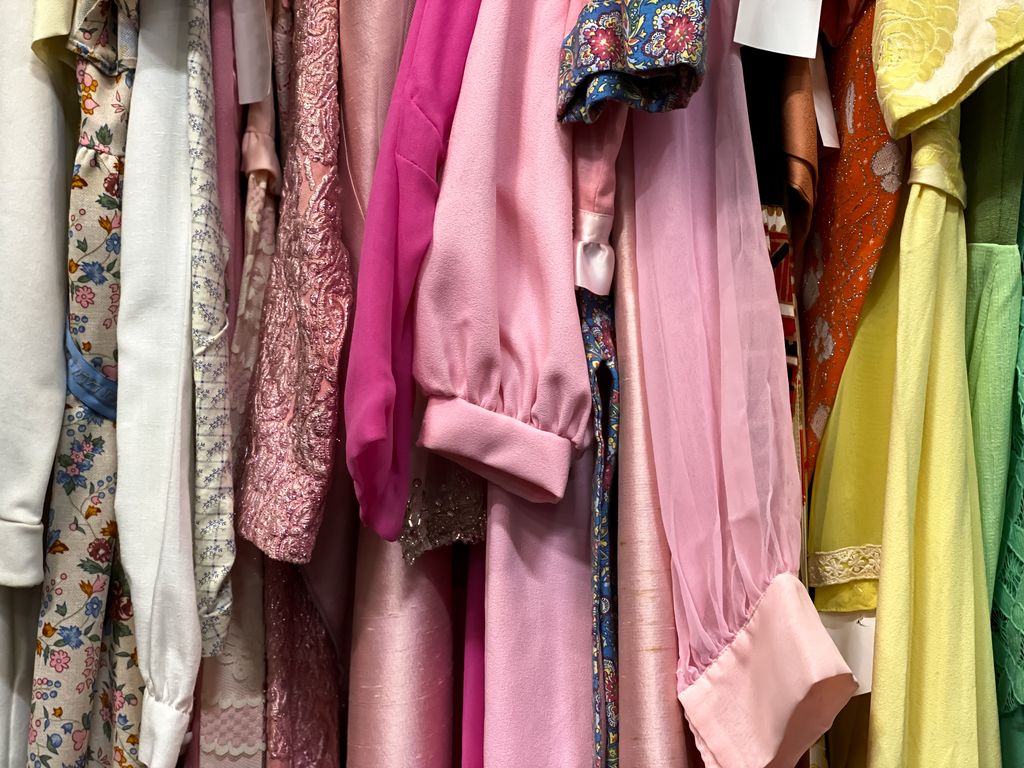In the last year, the fashion industry contributed as much as 97 million tonnes of waste to landfill.
Of that textile waste, it is estimated that 63 per cent of materials used for our clothing are made from virgin plastic.
We all know plastic is around to stay - literally. It takes anywhere from 20 - 500 years for plastic to disintegrate, and even then, it never fully disappears. Instead, it just gets smaller, permeating our oceans with an everlasting stream of synthetic materials.
HELLO!'s Planet Positive Green Coach, Lucy Johnson, goes behind the seams of our plastic (not-so) fantastic obsession with synthetic clothes.
When I began experimenting with living a greener life, I began to notice something curious about my wardrobe. The clothes I was buying - especially the cheaper ones - weren’t lasting nearly as long as they used to. Seams unravelled, fabrics pilled, and colours faded after a few washes.
As I dug deeper into the mystery of my disintegrating wardrobe, I realised it wasn’t just that my clothes were increasingly poorly made, quite a lot of them were actually made of plastic.
The labels of my T-shirts, jackets and trousers, showed a surprising proportion of synthetic materials. Much of my clothing, it turned out, wasn’t made from the natural fibres I’d assumed.
"Polyester, nylon, and acrylic had been quietly infiltrating my closet. I’m not alone, it seems. Our wardrobes are filling up with synthetic clothes."
It’s estimated that nearly 70 per cent of all clothing contains plastic in some form, with polyester being the most common. Which led me to wonder - why are we wearing plastic at all?
Plastic is not only bad for the planet, it’s also bad for us. It doesn’t let us sweat, trapping heat and moisture and causing skin irritation, dubious aromas and exacerbating conditions like eczema.
Its tiny particles wash out of our clothes in our washing machines and end up in the ocean and, increasingly, in our bodies.
It’s only since the 2000s that plastic has sneaked into our wardrobes. When I was a child, clothing, like food, came from the soil. Fabrics like cotton, linen, and hemp were cultivated from the earth, spun into fibres, and made into clothes.
Why are we wrapping ourselves in plastic?
Because it’s cheaper. Made from fossil fuels, synthetic fibres cost pennies to make, enabling brands to cut down on the costs of making our clothes, and allowing us to have a few extra jackets in our cupboards. Luckily, fashion never stands still. The backlash to the plasticisation of fashion is gathering pace. And the new frontier of fashion is soil.
Dare I say it, the soil is even becoming sexy. Model Arizona Muse, whose charity DIRT is focused on turning fashion into a climate solution, told me: "We need to recognise soil as the start of the fashion supply chain".
Just like food, clothes can grow out of the earth and return to it, in a way that actually improves the health of the soil. When clothes are made from natural fibres grown in soil in a regenerative way, they not only feel better on the skin but also enrich the soil, nourishing the ecosystem of plants, insects and animals that depend on it, and drawing carbon back into the earth.
What’s more, biodegradable natural fibres can then return to the earth.
As Arizona says, "Imagine a future where piles of fashion waste can be eaten by worms, turned into soil as they nurture plant life, instead of the raw toxic waste that we see exposed in mega-piles of garment waste today."
But how can we afford to dress like this? Clothes grown from organically-grown fibres are laughably expensive compared to a £5 shirt from a fast-fashion giant.
Like many on this journey, I began by adopting a "buy better, buy less" mindset. I started to invest in fewer clothes made from purely natural fibres like organic cotton and linen and embraced the re-wearing trend.
Yes, my clothes can be more expensive up front, but they last years longer, are a joy to wear, and cut down on my contribution to microplastic pollution.
Until I began this journey, I wouldn’t have thought twice about checking what my clothes were made of. But now, I’m in the habit of asking myself: What is this made of? Where did it come from, and where will it end up when it’s finally worn out?
And, I keep reminding myself, do I really want to wrap myself in plastic?














